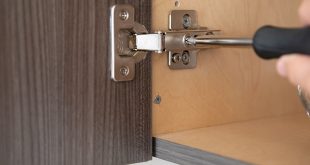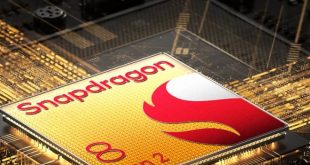In the world of data centers and networking infrastructure, server racks are the unsung heroes that house and protect the critical components of a network. These seemingly simple structures play a crucial role in ensuring the smooth operation of servers and networking equipment. In this article, we will delve into the key components of server racks, their functions, and what to consider when populating them with equipment.
1. Rack Enclosure
The enclosure is the skeletal structure of a server rack, providing the framework for all other parts of a server rack. It typically comes in various standard sizes, including 19-inch and 23-inch widths, and multiple height options. Rack enclosures are designed to meet industry standards, ensuring compatibility with various IT equipment. Learn more about them in the article “What is a server cabinet”.
2. Rack Rails
Rails are horizontal bars or brackets installed inside the server rack enclosure. They serve as the mounting points for servers, switches, and other networking equipment. Most rails are adjustable, allowing you to secure different-sized devices in the same enclosure. They are an essential component for organizing and securing equipment within the enclosure.
3. Cable Management
Effective cable management is critical for maintaining a clean and organized server rack. Cable management components such as cable trays, cable managers, and Velcro straps keep power and data cables organized, preventing tangling and ensuring proper airflow. Neat cable management also simplifies troubleshooting and maintenance.
4. Power Distribution Units (PDUs)
Power Distribution Units, or PDUs, are essential network rack components that distribute electrical power to all devices within the server rack. They come in various types, including basic, metered, and switched PDUs, each offering different levels of control and monitoring. Selecting the right PDU is crucial to ensure reliable power delivery and remote management capabilities.
5. Cooling Solutions
To prevent overheating and maintain optimal operating conditions for your equipment, server enclosures require cooling solutions. This can include rack-mounted fans, air conditioners, or even liquid cooling systems. Proper cooling ensures the longevity and performance of the devices housed within the rack.
6. Security Measures
Server racks often house sensitive and valuable data, making security measures a top priority. Lockable doors, access control systems, and surveillance cameras are some of the security components that can be integrated into a server enclosure. These measures safeguard your equipment against unauthorized access and theft.
7. Rack-Mounted Devices
Of course, the primary purpose of a server rack is to house server and networking equipment. These devices may include servers, switches, routers, patch panels, and more. When populating a server cabinet, it’s essential to plan for growth and leave room for expansion. Additionally, consider the airflow and heat dissipation requirements of each device to optimize performance and prevent overheating.
8. Environmental Monitoring Systems
In today’s data-driven world, server racks must be equipped with environmental monitoring systems to ensure optimal operating conditions. These systems typically include temperature sensors, humidity sensors, and smoke detectors. Monitoring the environment within the cabinet is crucial for early detection of potential issues that could lead to equipment failure. When a server room’s temperature rises or humidity levels drop to undesirable levels, these monitoring systems can trigger alarms or send alerts to IT personnel, allowing for proactive maintenance and preventing costly downtime.
9. Rack-Mountable UPS (Uninterruptible Power Supply)
In the event of a power outage or voltage fluctuations, an Uninterruptible Power Supply (UPS) is indispensable. Rack-mountable UPS units are designed to fit seamlessly within server enclosures and provide a stable power supply for critical equipment. They offer battery backup to keep servers and networking devices running long enough to safely shut down or switch to back up power sources. Choosing the right UPS capacity is crucial, as it depends on the load and runtime requirements of your equipment.
10. Rack-Mountable KVM Switches
Keyboard, Video, and Mouse (KVM) switches represent a cornerstone of efficient server management within a rack. Rack-mounted KVM switches stand as indispensable tools that empower administrators to exercise control over numerous servers using a single console, effectively decluttering the workspace and optimizing operational processes. These devices emerge as invaluable assets when it comes to tackling troubleshooting, performing maintenance tasks, and facilitating configuration adjustments. By granting IT personnel seamless access and management capabilities directly, they eliminate the need for physical connections to individual servers, simplifying the entire server management process.
11. Rack Blanking Panels
Rack blanking panels may seem like a minor detail, but they play a significant role in optimizing airflow within a server cabinet. When empty spaces in an enclosure are not filled, they
can disrupt the airflow patterns, leading to hotspots and reduced cooling efficiency. Rack blanking panels are simple, yet effective, solutions to fill these gaps and promote consistent airflow, helping to maintain the desired temperature and prevent overheating.
12. Cable Routing Accessories
Efficient cable management extends beyond the realms of cable trays and Velcro straps. Within the enclosure, cable routing accessories like cable rings, hooks, and channels emerge as indispensable allies in the ongoing endeavor to maintain cable organization and security. These invaluable components play a pivotal role in the neat and orderly routing of cables, effectively averting scenarios where cables obstruct airflow or become inadvertently unplugged during routine maintenance tasks. An organized cable infrastructure not only simplifies the process of tracing and identifying connections but also serves as a proactive measure in mitigating downtime should issues arise within the network.
13. Rack-Mountable Patch Panels
Patch panels are essential for organizing and managing network connections within a server rack. They provide a centralized point for connecting network cables, making it easier to route and troubleshoot connections. Patch panels come in various configurations, including Ethernet, fiber optic, and audio/video options, depending on your network requirements.
14. Grounding and Bonding
Grounding and bonding are essential for electrical safety within a server cabinet. Proper grounding ensures that electrical currents are safely directed away from sensitive equipment and prevents electrical shocks. Grounding bars and conductive straps are commonly used components to establish a solid electrical ground within the rack.
15. Redundancy and Failover Systems
To ensure maximum uptime and fault tolerance, consider implementing redundancy and failover systems within your server cabinet. Redundant power supplies, network connections, and storage arrays can help prevent downtime in case of component failures. These systems automatically switch to back up components, ensuring continuous operation and minimizing service interruptions.
16. Cable Labels and Documentation
Maintaining a server rack also involves proper documentation and labeling. Cable labels and documentation help IT personnel identify and trace cables accurately. Labeling each cable with its purpose, source, and destination makes it easier to perform changes and troubleshoot network issues. Detailed documentation of equipment configurations, IP addresses, and maintenance schedules is invaluable for efficient rack management.
Conclusion
A server rack is more than just a metal frame; it’s a carefully designed system of components that work together to house, protect, and power your critical IT infrastructure. Understanding the key components of a server rack, including the enclosure itself, rails, cable management, PDUs, cooling solutions, security measures, and the devices themselves, is essential for building a reliable and efficient network infrastructure.
When setting up a case and deciding what to put in a server rack, meticulous planning and consideration of the components you’ll use, and their placement will go a long way in ensuring the stability and performance of your network. Server cases are the backbone of modern data centers and IT environments, and investing in high-quality components and thoughtful design is a wise choice for any organization.
Remember that the proper maintenance and organization of your server rack will not only enhance its functionality but also reduce the risk of downtime, improve troubleshooting efficiency, and ultimately contribute to the success of your IT operations.
 Pagalmusiq.com Popular News Update Website | Pagalmusiq.com
Pagalmusiq.com Popular News Update Website | Pagalmusiq.com




